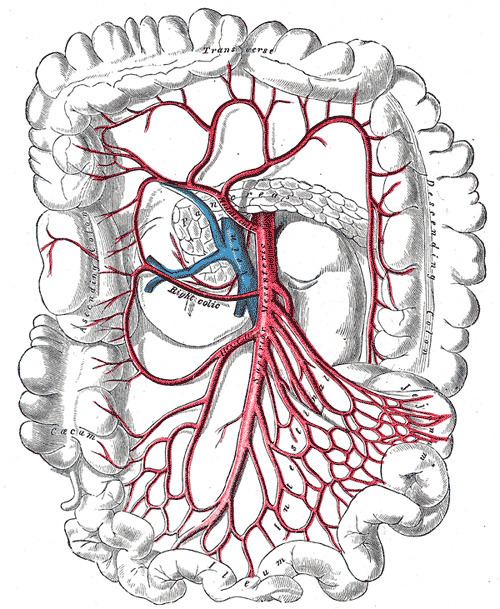Precursor vitelline arteries Supplies intestine | ||
 | ||
Branches Latin arteria mesenterica superior | ||
In human anatomy, the superior mesenteric artery (SMA) arises from the anterior surface of the abdominal aorta, just inferior to the origin of the celiac trunk, and supplies the intestine from the lower part of the duodenum through two-thirds of the transverse colon, as well as the pancreas.
Contents
Structure
It arises anterior to lower border of vertebra L1 in an adult. It is usually 1 cm lower than the celiac trunk. It initially travels in an anterior/inferior direction, passing behind/under the neck of the pancreas and the splenic vein. Located under this portion of the superior mesenteric artery, between it and the aorta, are the following:
The SMA typically runs to the left of the similarly named vein, the superior mesenteric vein. After passing the neck of the pancreas it starts giving off its branches.
Branches
The middle, right, and ileocecal branches anastomose with each other to form a marginal artery along the inner border of the colon. This artery is completed by branches of the left colic which is a branch of the inferior mesenteric artery.
